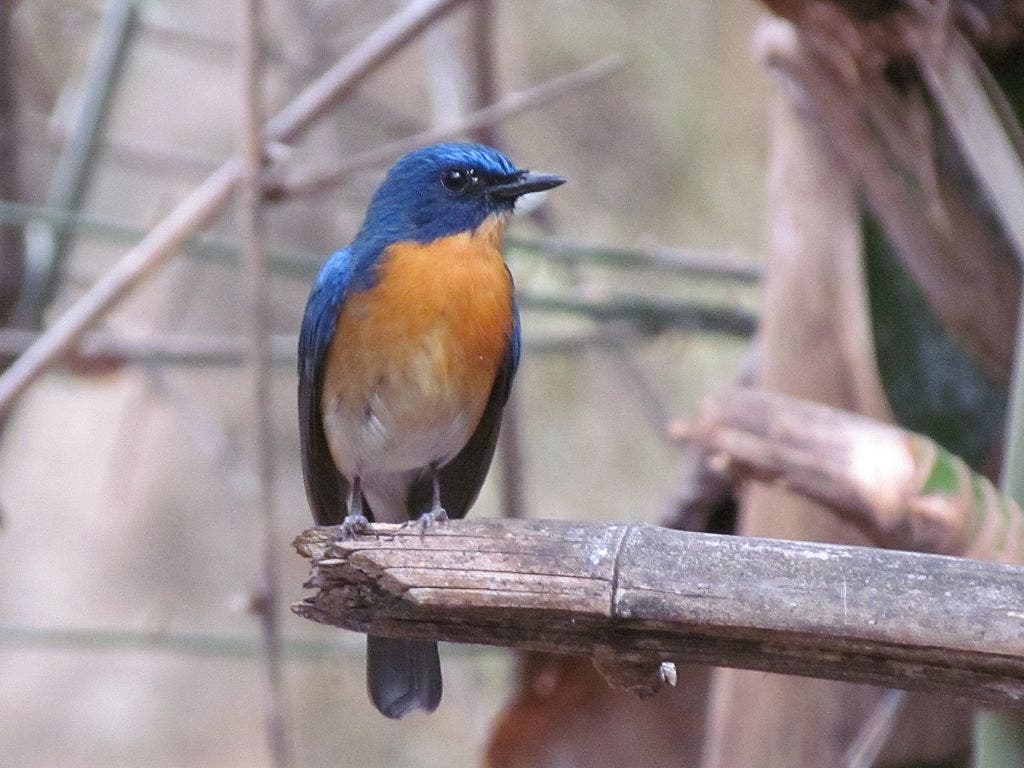Birds with bright colors are often considered the most beautiful, and this makes them aesthetically valuable to people. But the very reasons that make songbirds coveted are also putting them in peril. Not only do some of these species end up as logos of conservation programs but they also become targets for pet trade as people want to own them, with no afterthought given to the potential repercussions for wildlife. This means most brightly colored birds are often threatened with extinction.

In a new study, researchers used data on the international trade in songbirds to analyze the link between commercially desirable birds and their coloration. They used metrics of color to assess the aesthetics of taxonomic groups of birds across the world and found the exploitation of songbirds for trade is directly linked to their coloration.
“Aesthetic value is an important part of how people value nature,” Rebecca Senior, study author, said in a statement. “However, there is potential for conflict when what motivates some people to protect certain species is the same thing that makes other people want to own them. Songbirds are highly sought after in the pet trade.”
Trade of songbirds
Using the Songbirds in Trade database, the researchers found that pet trade impacts over 1,400 passerine species (perching birds, including songbirds), which amounts to 30% of them. Globally, close to 3,000 bird species are traded as pets or products, driven by people’s demand for aesthetically pleasing birds based on attributes of color and texture.
The researchers found that trade status wasn’t random regarding bird phylogeny. This means that some groups of related bird species, such as weavers (Ploceidae) and birds-of-paradise (Paradisaeidae) were more likely to be traded than others. Further analysis also showed that these groups of birds generally have more colorful species.
Researchers classed birds by coloring using two approaches. They established the diversity of a bird’s coloration by recording the plumage colors in the bird’s body, then they assessed the uniqueness of the colors. The analysis shows that the tropics are the epicenter of bird color, with 91% of the world’s most diversely colored assemblages of songbirds.

Species that have more unique coloration were more likely to be traded as pets and to be classed as threatened, the study showed. Also, those with more colors were more likely to be traded at higher prices than duller species. And it wasn’t just birds with bright blues or oranges. Pure white was found to be a particularly targeted color too.
“Understanding what motivates trade is essential to identify at-risk species potentially requiring more proactive protection from trapping,” Senior said in a statement. “Trade has the capacity to be regulated and managed sustainably with a better understanding of what is traded as well as where and why trade occurs.”
The researchers warned many colorful species could face larger pressures and edge closer to extinction in the near future. When that happens, trade could shift to other species in the same family group with similarly desirable features. This puts about 500 extra passerine species currently not traded at risk of being traded as pets in the future.
Also, as most of the colored songbird species are gradually removed from wild communities, the researchers anticipated that the bird fauna left behind will manifest more drabness. This could have the consequence of making them less valuable to humans aesthetically, which in turn would make them not be adequately conserved. It really is a catch-22, with songbirds seemingly losing either way.
Preventing this would require further conservation programs to protect the most colorful spots on Earth, located in tropical forests of Africa, Indonesia and South America, the researchers said. These areas are hotspots of biological diversity in general, so protecting them would also be beneficial for other threatened and exploited species.
The study was published in the journal Current Biology.









